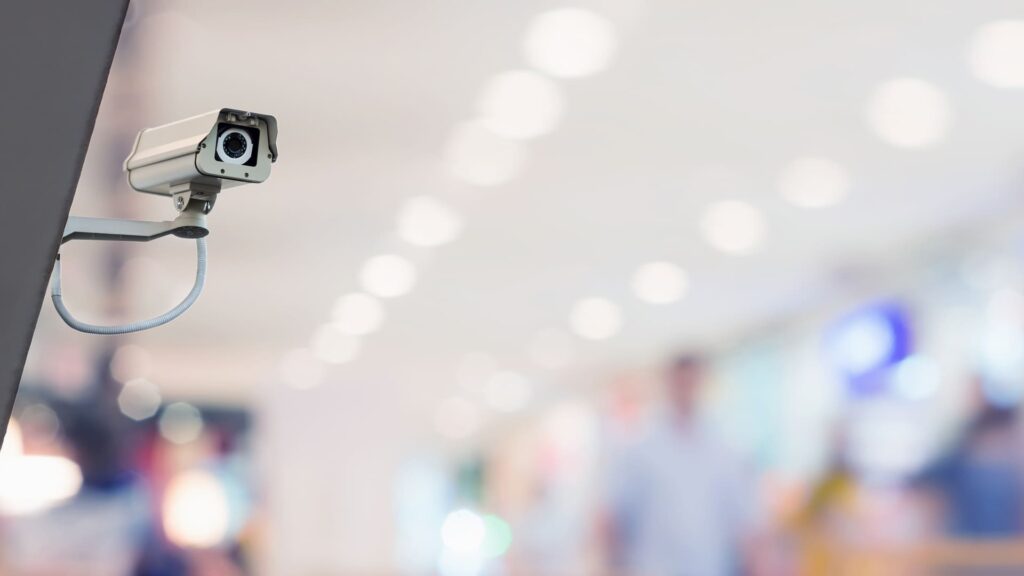
5 proven ways to avoid interference in video monitoring systems
5 proven ways to avoid interference in video monitoring systems
What annoys the largest number of video surveillance users? Of course, image interference. Waves, sinusoids, graininess, horizontal stripes of different widths, and other forms of poor image quality can interfere with cameras. Not a single video surveillance system is immune to this situation, even if the installation seemed to be done perfectly on a turnkey basis. It is necessary to find the cause and eliminate it. How to do it quickly and easily, see our article. Read on.
What causes interference for video cameras? 6 reasons
The most common CCTV interference is caused by:
- Long distance of cable spans. Cable length up to 300 meters does not cause signal loss.
- Broken, damaged cable. Most often, careless installation is to blame: poor-quality connection of connectors and hanging several cables on one suspension (the cable for video surveillance is heavy, and atmospheric phenomena contribute to breaks).
- Poor quality hardware and connectors. Whatever one may say, but the quality of equipment plays a decisive role in video surveillance.
- Ignoring grounding rules. Its complete absence is also possible. The entire video monitoring system must be grounded to ensure flawless operation. We are talking about the occurrence of impulse noise (constant or periodic) in the neutral wire.
- Сable and microwave points, radio telephones, impulses of power supplies, fluorescent lamps and other third-party devices.
- Exposure to a parasitic or intentional signal. There is a lot of information about how to interfere with video surveillance, which is used by cybercriminals.
Possible sources
Video surveillance camera interference may occur due to the proximity of following sources:
- electric transport;
- various industrial and/or transformer installations;
- high-voltage electric lines;
- welding kits;
- supply cables;
- PC power supply;
- antennas;
- uninterruptible power supplies for stable electrical voltage;
- microwave equipment (for example, household microwave ovens).
Visual noise differences
Depending on the source and its cause, experts distinguish between the following visual types of interference:
- Graininess of the picture. Such interference is caused by lamps for lighting and power supplies.
- Sinusoids and various floating lines/waves are caused by poor quality ground loop installation. In particular, problems occur at the point of signal reception/delivery.
- Rarely occurring stripes (dark or light). They can come from the force field of signal processing devices.
- Horizontal stripes appear from microwaves and radio fields. They can be of different widths.
- Dark shadows and violation of the geometry of the image. This is the influence of currents of industrial origin.
5 proven ways to deal with interference
I’ll tell you about proven ways to deal with interference:
- Preventive measures.
Initially, in order to avoid many problems in a video surveillance system, you need to pay due attention to the project.
What should be done? It is necessary to design the system. Read the article “Video surveillance project design. Everything you need to know“.
Also, the guarantee of smooth operation will be the choice of high-quality equipment, cable with a low attenuation coefficient and smart software such as Faceter.
- Check the cable.
Most interference is caused by loss of signal due to excessive cable length, inaccurate connector wiring, and friction. Experts recommend using a solder joint, suspending one cable to one hanger, and not allowing the cable to be laid close to power or signal lines.
- Check grounding.
There can be many nuances here:
- influence of external currents moving along the cable sheath is possible. The reason may be the potential difference between the monitor and video camera;
- presence of parasitic points in the ground loop (if the equipment is not in contact with the ground);
- power supply type violations;
- other reasons.
Recommended:
- explore the ground loop;
- install cameras with a grounded housing;
- if the camera is mounted on a metal bracket, use a piece of wood between the mounting location and bracket. In most cases, this is how the problem is solved.
- Study of the environment for the presence of sources of interference (power grids, equipment).
Even a nearby microwave oven or computer power supply can significantly degrade the picture quality. Review household appliances and other sources of the force field.
- Check the camera’s power supply.
Users often complain that video cameras get interference at night. This is typical for outdoor night vision cameras. There is an obvious problem with the power supply: at night, the IR illumination turns on, which requires energy. You need to find out what voltage is on the cameras with closed light sensors.
Alternative solution
As an alternative to a classic video surveillance system with many cables, an innovative wireless solution can be used: video surveillance using two mobile phones + software from Faceter.
You only need two smartphones with following minimal technical requirements:
- working processor, screen, charging socket;
- camera from 1.3 MP;
- Internet access.
It is required to download the software to both devices. If the Android system is installed on the phone, then you can download it here, if it is iOS, then here.
In this case, one phone will work in the surveillance area, as a camera, and the second will always be at hand, as a monitor. Details in the article “Turning an old smartphone into a surveillance camera“.
It will take 15-20 minutes to install the system, and the only cables will be the one to charge the phone.
You can read about remote video surveillance via phone and the Internet here.
Instead of a conclusion
Most interference in a CCTV system can be eliminated with a simple revision of the environment, cable, and ground loop. It is also worth noting that many causes of interference can be eliminated at the planning stage, if you do not ignore the design stage and quality equipment.








